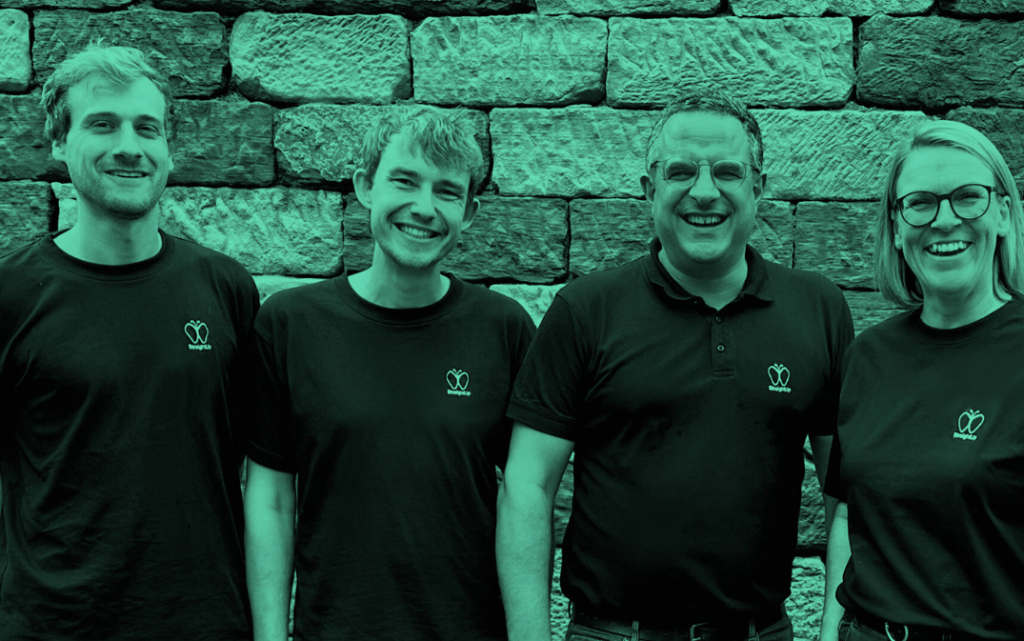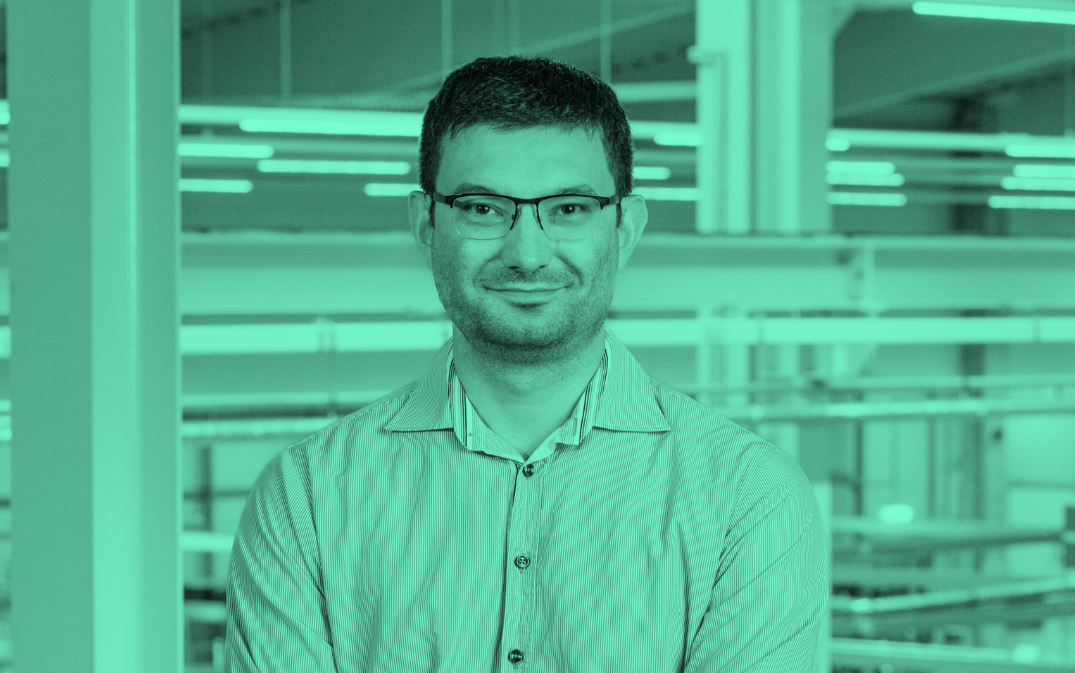Programm
Mittwoch, 24.09. 09:00–18:00 Uhr
08:00-09:00 Uhr Akkreditierung/Check-In
Session 1 (Chair: Dr. Burkhard Maaß)
09:10-09:30 Uhr
Particles in Shape Memory Alloys: Effects on Functional and Structural Properties
09:30-09:50 Uhr
Opportunities and Potentials of Lithography-based Metal Manufacturing (LMM) for the Production of Miniaturized and Complex Metal Components
10:10–10:30 Uhr
Thin-Film NiTi Intrasaccular Implant with Flaps for Aneurysm Treatments
10:50-11:20 Uhr Kaffeepause
Session 2 (Chair: Prof. Dr. Paul Motzki)
11:20-11:40 Uhr
On the importance of alloy composition and microstructure optimization in shape memory technology
11:40-12:00 Uhr
Towards sustainable NiTi metallurgy: Impurities, microstructural evolution and fundamental effects on phase transformation behavior
12:20–12:40 Uhr
Directed energy deposition for functionalization of steel components with NiTi
12:40-13:00 Uhr
Where do we stand today – Status quo on the progress of non-medical application fields of NiTi based shape memory alloys. Driving forces and obstacles in the framework of the implementation of SMA actuators for different industries.
13:00–14:00 Uhr Mittagessen & Ausstellerplattform
Session 3 (Chair: Dr. Sebastian Fähler)
14:00-14:20 Uhr
Prof. Dr. Paul Motzki
Pushing the Boundaries of Shape Memory Alloy Actuators: record-breaking actuation frequencies and AI-based closed-loop control
15:00–15:20 Uhr
Using shape memory alloys for low temperature waste heat conversion – material properties, requirements, and challenges
15:20-15:50 Uhr Kaffeepause
16:20–16:40 Uhr
Increasing Efficiency and Cycle Frequency of Thermoelastic Harvesting for low-grade Waste Heat with Shape Memory Wires
17:00–17:20 Uhr
Computational modelling of the mechanical performance of Nitinol guidewires
17:40–18:00 Uhr
Predictive Approaches to Enhance the Fatigue Assessment of Ni-Ti Biomedical Devices
18:00-18:30 Uhr Netzwerken & Ausstellerplattform
ab 19:00 Uhr: Netzwerk-Abend
Alle Vorträge werden in englischer Sprache gehalten.
Programm
Donnerstag, 25.09. 09:10–18:00 Uhr
08:15-09:10 Uhr Check-In
Session 5 (Chair: Prof. Dr. Jan Frenzel)
09:10-09:30 Uhr
Effect of thermomechanical pre-treatment on Ni release from electropolished NiTi wires
09:30-09:50 Uhr
Additive manufacturing and post processing of NiTi for intracranial stents providing complex geometries
10:10–10:30 Uhr
Bridging Innovation and Adoption: Navigating Industry-Specific Hurdles in New Product Introduction
10:50-11:20 Uhr Kaffeepause
12:20–12:40 Uhr
Tailoring the functional Properties of NiTi Shape Memory Alloy Actuator Wires
13:00–14:00 Uhr Mittagessen & Ausstellerplattform
Session 7 (Chair: Prof. Peter Anderson)
14:00-14:20 Uhr
Superelastic Nitinol for Improved Structural Resilience of Reinforced Concrete Structures
14:40–15:00 Uhr
Infrared Thermography for Precise Microscale Temperature Measurements on NiTi-Based Shape Memory Alloy Wires
15:00–15:20 Uhr
Implementation of Superelastic Nitinol in New Reinforced Concrete Construction – Experimental Research
15:20-15:50 Uhr Kaffeepause
16:40–17:00 Uhr
SMA in Jet Engines and Turbomachinery: Explorative Investigation of Monolithic NiTiX Blades
17:00–17:20 Uhr
Long-Term Behavior of Electrically Driven SMA Wires Deflected by a Pulley
17:20-17:40 Uhr
High Temperature Shape Memory Alloys Based on Ni-rich Ni-Ti-Hf and Ni-Ti-Zr
17:40–18:00 Uhr
Customization of NiTi(X,Y) shape memory alloys for elastocaloric applications
18:00 Uhr Verabschiedung
Alle Vorträge werden in englischer Sprache gehalten.
Speaker:innen
Dummy
Prof. Dr. Gunther Eggeler

Seniorprofessor at Chair Materials Science and Engineering (BOKOMAT Management)
Chair Materials Science and Engineering, Ruhr-Universität Bochum
Particles in Shape Memory Alloys: Effects on Functional and Structural Properties
Shape memory components exploit the thermal (one way effect, 1WE) and mechanical memory (pseudoelastictiy, PE) of shape memory alloys, which rely on the martensitic forward and reverse transformation in shape memory alloys (SMAs). When making shape memory alloy (SMA) components, one cannot avoid the formation of small particles in the microstructure. These can form as metastable precipitates like Ni4Ti3 in Ni-rich near equiatomic NiTi alloys.
Sascha Döring

phD Stundent
Molecular Immunology (RUB)
phenox GmbH
Biocompatibility of NiTi stents produced by Laser Powder Bed Fusion
Nickel–Titanium shape memory alloys (NiTi-SMA) are of biomedical interest due to their unusual range of pure elastic deformability. These characteristics enable NiTi stents to be compressed for minimally invasive insertion and subsequently self-expand to their functional diameter upon deployment.
Lucas Vogel

CEO
MetShape GmbH
Opportunities and Potentials of Lithography-based Metal Manufacturing (LMM) for the Production of Miniaturized and Complex Metal Components
Lithography-based Metal Manufacturing (LMM) is a promising additive manufacturing (AM) technology designed for the production of complex, miniaturised metal parts with high precision and surface quality. The presentation will provide an introduction to the fundamental principles of the LMM process and explain the process chain. This process chain commences with the formulation of the feedstock and continues through photopolymer-based printing, debinding and sintering.
Dr. Duygu Dengiz

Post Doc
Material Science and Engineering, Kiel University
Thin-Film NiTi Intrasaccular Implant with Flaps for Aneurysm Treatments
Cerebral aneurysms are dilations of blood vessels that can rupture with fatal consequences[1]. Commercial implants for aneurysm treatment are often made of nickel-titanium (NiTi) due to its unique shape memory and superelastic properties. Shape memory alloys (SMAs) like NiTi enable devices to self-expand and conform to complex vascular anatomies, making them ideal for minimally invasive interventions[2].
Dr. Andreas Wick

Sr. Director of Technology
Confluent MedicalConfluent Medical
Nitinol has become a widely used material for medical devices due to its unique superelastic and shape memory properties. These characteristics enable innovative device designs and functionalities that are not possible with conventional materials. However, designing and processing Nitinol-based devices requires careful consideration of multiple factors. Material selection, processing methods, parameter control, and the sequence of manufacturing steps all play critical roles in determining the final device performance.
Prof. Dr. Jan Frenzel

Academic Senior Council, Leader Research Group Materials Processing
Chair Materials Science and Engineering, Ruhr University Bochum
On the importance of alloy composition and microstructure optimization in shape memory technology
In this study, we present examples which demonstrate how the functional properties and performance of NiTi-based shape memory alloys (SMAs) depend on the composition and microstructure. There are cases where small or large concentration changes are required to achieve changes in transformation behavior.
Sakia Noorzayee

Research Assistant
Chair Materials Science and Engineering, Ruhr University Bochum
Towards sustainable NiTi metallurgy: Impurities, microstructural evolution and fundamental effects on phase transformation behavior
Research on recycling of important engineering materials has significantly intensified during the last years. To date, sustainability aspects related to nickel and titanium have been overshadowed by aluminum and steel recycling, as these metals dominate global markets.
Pedro Guimaraes Rocha

PhD Candidate
Department of Civil Engineering, York University
Enhancing Seismic Resilience: From BRBs to Superelastic SMAs
With the enactment of modern seismic provisions, there is an increasing need to retrofit existing structures. Past earthquakes have revealed the life-threatening consequences and economic losses resulting from inadequately designed buildings. Seismic retrofitting, therefore, is an essential strategy to enhance structural resilience.
Damian Haske & Vladimir Cara

Research Associates
Chair of Applied Laser Technologies, Ruhr University Bochum
Chair of Materials Science and Engineering, University Duisburg-Essen
Directed energy deposition for functionalization of steel components with NiTi
Shape memory alloys (SMAs) such as Nickel-Titanium (NiTi) offer promising functional properties for a wide range of industrial applications. In this study, a cost-effective approach is presented for functionalizing low-cost steel components with NiTi, using laser-based Directed Energy Deposition (DED) with coaxial wire feeding. This research project implements NiTi to compensate for load cycles.
Dr. Christian Großmann

Managing Director
Ingpuls GmbH
Where do we stand today – Status quo on the progress of non-medical application fields of NiTi based shape memory alloys. Driving forces and obstacles in the framework of the implementation of SMA actuators for different industries.
In retrospect, it is clear that there has always been great interest in advanced SMA-based actuators in recent decades. However, for a long time it was not possible to get beyond the status of simple functional demonstrators. In some cases, the materials with their functional and structural properties were not yet good enough, but in some cases, it was also the framework conditions of the interested fields of application.
Prof. Dr. Paul Motzki

Scientific Director / CEO
ZeMA – Zentrum für Mechatronik und Automatisierungstechnik gemeinnützige GmbH
Pushing the Boundaries of Shape Memory Alloy Actuators: record-breaking actuation frequencies and AI-based closed-loop control
Shape memory alloys (SMA) are commonly utilized in compact actuators due to their high energy density, meaning possible work output in relation to their weight and volume. Their application area is limited by their poor dynamic behavior, caused by the thermal activation characteristics of SMA materials. Typical actuation frequencies of SMA-based actuators range from 1 Hz to 10 Hz.
Kai Thüsing

Teamleader Shape Memory Materials
Shape Memory Alloys, Fraunhofer Institute for Machine Tools and Forming Technology IWU
Design of an inchworm actuator based on a shape memory alloy wires
The presentation introduces a novel shape memory alloy (SMA)-based inchworm actuator that offers unlimited displacement, in contrast to traditional SMA actuators, which only provide a limited displacement of 1-2% of the length of the shape memory component. The inchworm actuator concept, inspired by the locomotion of an inchworm, facilitates larger displacements through adding up incremental movements.
Dr. Jingyuan Xu

Group Leader
Institute of Microstructure Technology, Karlsruhe Institute of Technology (KIT)
Elastocaloric cooling from miniature scale to macro scale
Elastocaloric cooling is an emerging solid-state cooling technology that promises environmentally friendly and energy-efficient alternatives to traditional vapor-compression systems. This talk presents recent advancements in elastocaloric cooling devices at Karlsruhe Institute of Technology, spanning from miniature to macro-scale implementations.
At the miniature scale, we utilize superelastic SMA films, which combine a high elastocaloric effect with efficient heat transfer due to their large surface-to-volume ratios.
Dr. Oluwaseyi Oluwabi

Research Assistant
Chair Materials Science and Engineering, Ruhr University Bochum
Using shape memory alloys for low temperature waste heat conversion – material properties, requirements, and challenges
Close to 60% of the primary energy loss in conversion processes comes from domestic systems, which operate in a temperature range below 100 °C. This waste heat cannot be utilized in technical applications. Recovering it offers a path to reduce energy loss and to improve overall efficiency. While industrial waste heat recovery is well-established for high-temperature processes, there is a major technical gap in the utilization of low-grade (temperature) thermal energy.
Dr. Sebastian Fähler

Head of Research Team “Ferroic materials, films and devices”
Institute of Ion Beam Physics and Materials Research, Helmholtz-Zentrum Dresden-Rossendorf
Increasing Efficiency and Cycle Frequency of Thermoelastic Harvesting for low-grade Waste Heat with Shape Memory Wires
The conversion of low-grade waste heat (<100 °C) from industrial processes can contribute significantly to the achievement of the ambitious climate goals, yet the construction of efficient, powerful and inexpensive systems remains a challenge. Especially martensitic materials are experiencing a renaissance as active materials for harvesting of waste heat, due to their high actuation energy and high conversion efficiency.
Dr. Kun Wang

Postdoctoral Researcher, Institute of Microstructure Technology
Karlsruhe Institute of Technology (KIT)
Modeling Woven Porous Regenerators for Elastocaloric Cooling
Heating and cooling systems in Europe use about 40% of the continent’s energy, mostly relying on refriger-ants that harm the environment. Elastocaloric cooling offers a greener solution by using shape-memory alloys that heat up or cool down when subjected to compression/tension, eliminating harmful refrigerants. Regenerative elastocaloric systems, employing oscillating fluid flows and active elastocaloric regenerators (AERs), enhance temperature spans 2-4 times beyond material adiabatic limits by recycling heat and improving heat exchange efficiency.
Dr. William Ronan

Assistant Prof
Engineering, University of Galway
Computational modelling of the mechanical performance of Nitinol guidewires
Guidewires are long, slender, flexible wires with a metal core for navigating through complex networks of blood vessels to guide the placement of larger medical devices. In some instances, Nitinol guidewires can exhibit undesirable phenomena such as “lag” and “whip”, where the movement input by the surgeon proximally is not transferred to the distal end of the device during a procedure.
Joe Ritz

President, Research and Development
Blaze BioTech
About the history of Nitinol Orthopedic Devices
Nitinol, a nickel-titanium alloy, is becoming more widely used in orthopedic applications due to its unique properties of shape memory and superelasticity. These properties allow for minimally invasive procedures, faster healing times, and more natural load distribution in bone and joints. Common applications include bone staples, intramedullary nails, and fracture fixation devices.
Prof. Lorenza Petrini

Full Professor
Deparment of Civil and Environmental Engineering, Politecnico di Milano
Predictive Approaches to Enhance the Fatigue Assessment of Ni-Ti Biomedical Devices
Nickel-Titanium (Ni-Ti) shape memory alloys are the top choice for designing self-expanding cardiovascular devices for minimally invasive surgeries, thanks to their superelastic behavior related to stress-induced phase transformation. The long-term reliability of these devices remains a critical issue, especially for peripheral stents and heart valves subjected to millions of load cycles due to body movements.
Prof. Dr. Andreas Undisz

Head of Group
Electron Microscopy and Microstructural Analysis Group, Chemnitz University of Technology
Effect of thermomechanical pre-treatment on Ni release from electropolished NiTi wires
Assessment of NiTi devices for medical applications requires careful consideration of Ni ion release. For addressing specific release behavior of NiTi alloys, the standard ISO 10993-15 was updated, extending the immersion time from one week to twelve weeks. This revision points out that NiTi exhibits a rather complex Ni release behavior with fundamental aspects requiring further investigation.
Sandra Herzig

Research Assistant
Laser Powder Bed Fusion, Fraunhofer Institute for Machine Tools and Forming Technology IWU
Additive manufacturing and post processing of NiTi for intracranial stents providing complex geometries
Nickel-Titanium is a commonly used alloy in medical technology for the manufacture of stents because of its pseudoelasticity. Typical manufacturing processes for NiTiNOL (NiTi) stents are laser cutting from a tube or plate or braiding by weaving thin wires together to form a mesh-like structure. The production of complex stent geometries is costly and time-consuming, often restricted to tubular outer geometries due to manufacturing constrains.
Marcus Hamann-Schroer

Co-Founder
R&D Department, StraightUp
StraightUp – Shape Memory Alloys against back pain
Poor posture and back pain are among the most common health problems of our time – often caused by sedentary activities and a lack of exercise. Our young start-up is developing an intelligent posture coach in the form of a smart wearable that combines modern sensor technology with a design suitable for everyday use.
Ciera Balkenbusch

Senior Engineering Manager
Nitinol NPD, Fort Wayne Metals
Bridging Innovation and Adoption: Navigating Industry-Specific Hurdles in New Alloy Introductionoy wires
In the world of New Product Development, customer-driven innovation often reveals opportunities to enhance the performance of established materials like Nitinol. While Nitinol is well-known in the medical field, expanding its use into industries such as automotive, energy, aerospace, and electronics requires more than just technical adaptation—it often demands the creation of entirely new alloys.
Dr. Harald Buchalla

Geschäftsführer, Ingpuls Dynamics GmbH
Direktor Innovation und Geschäftsentwicklung, Brand KG
Material Science meets Family Business
SMA has been well known in the context of actuator technology for many decades. Nevertheless, this technology is still a minor player in practical applications. There are several reasons for that…
Prof. Peter Anderson

Professor
Materials Science and Engineering, The Ohio State University
Extreme Processing of Binary NiTi Shape Memory Alloys
This work explores processing of binary NiTi shape memory alloys (SMAs) in nonconventional ways and the resulting effects on pseudoelastic response. Among the approaches employed are: (1) augmented laser impact welding of the SMA and brass; (2) Taylor impact studies of SMA cylinders; (3) laser powder bed fusion of oxide dispersion strengthened binary NiTi.
Dr. Alexander Paulsen

Senior Engineer
Ingpuls GmbH
Tailoring the functional Properties of NiTi Shape Memory Alloy Actuator Wires
Binary NiTi shape memory alloys (SMA) are widely used for actuator solutions in different applications e.g. robotics and automotive industry. Usually such actuation tasks can be realized using solenoids or dc motors, which in some cases suffer from larger installation spaces and noise pollution produced during the actuation cycle.
Dr. Marvin Schuleit

Research Assistant
Applied Laser Technologies, Ruhr University Bochum
Dissimilar Laser Welding of NiTi for Actuator Applications
Integration of NiTi shape memory alloys into technical systems requires joining technologies that preserve their unique functional properties while enabling automated processing. Traditional welding methods often compromise the martensitic transformation behavior due to excessive heat input and uncontrolled microstructural changes.
Dr. Jannis Lemke

Managing Director
BioActiveMetals S.r.l.
Ni-Ti-Hf-Nb SMAs for High-Temperature Actuation
Ni-Ti-Hf-Nb SMAs for High-TemperIn the field of high-temperature shape memory alloys (HTSMA) for actuators operating above 100 °C, alloy development has not yet fully met industrial requirements. The most promising and extensively studied system is Ni-Ti-Hf. This system has been widely investigated to achieve higher transformation temperatures compared to standard binary NiTi; however, its development remains far from widespread commercialization, primarily due to the limited processability of these alloys.
Dr. Dan Palermo

Professor
Department of Civil Engineering & Deputy Provost, Markham Campus, York University
Superelastic Nitinol for Improved Structural Resilience of Reinforced Concrete Structures
Over the past two decades, research has intensified on retrofit methodologies and new construction that incorporate Superelastic Nitinol (SE-SMAs) as the main reinforcing material. This is in direct response to several major earthquakes, which highlighted that while structures may not collapse and satisfy the life-safety performance criteria, the damage is often to the extent that demolition is the only alternative.
Dr. Jan Marx

Post Doc
Applied Laser Technologies, Ruhr University Bochum
Ultrashort Pulse Laser Cutting of NiTi in Liquid Environment
Laser treatment of medical stents is often regarded critically due to the introduction of heat into the material. Despite being termed “cold ablation,” ultrashort pulse laser processing still results in a non-negligible heat-affected zone, which demands subsequent processing steps. This is particularly relevant when processing fragile components such as wires or foils, where the heat cannot be dissipated across large volumes.
Dr. Muhammad Ali Javed

Research Associate, Professorship of Applied Thermodynamics,
University of Technology Chemnitz
Infrared Thermography for Precise Microscale Temperature Measurements on NiTi-Based Shape Memory Alloy Wires
The shape memory effect and superelasticity of nickel-titanium alloys (NiTi) make them highly attractive for actuators and elastocaloric cooling technologies, enabled by a reversible phase transformation between martensite and austenite triggered by temperature or stress. Thin NiTi wires are often used due to their favorable surface-to-volume ratio and manufacturability [1]. However, accurate temperature measurement in these wires is challenging, as conventional contact thermometry may interfere with phase transformation behavior.
Austin Martins-Robalino

PhD Candidate
Department of Civil Engineering, York University
Implementation of Superelastic Nitinol in New Reinforced Concrete Construction – Experimental Research
The occurrence of earthquake events can be detrimental to the infrastructure of the affected areas in addition to the immediate risk to human life. Even if structures in these areas are built to modern seismic design codes, and successfully avoid collapse ensuring life safety, it is still common to find many buildings deemed unsafe for occupation due to significant residual displacements.
Oliver Kunc

Researcher
Institute of Structures and Design, DLR (German Aerospace Center)
SMA in Jet Engines and Turbomachinery: Explorative Investigation of Monolithic NiTiX Blades
As of today, SMA have not yet enabled widespread breakthroughs in aircraft propulsion, stationary energy production, or turbomachinery in general. Reasons for this are manifold and involve factors of technology, certification, and economy. From the multitude of technical obstacles, the occurring temperatures are especially significant and quickly rule out any SMA composites involving polymers.
Tobias Schmelter

Research Assistant
Chair of Production Systems, Ruhr University Bochum
Long-Term Behavior of Electrically Driven SMA Wires Deflected by a Pulley
To enhance the commercial viability and cost-efficiency of shape memory alloy (SMA)-driven actuators, it is essential to optimise their fatigue life. Typically, actuator systems are developed first, with durability investigations conducted afterwards. This sequence is primarily due to the absence of standardised handling guidelines for SMA wires — guide-lines that would enable the identification of factors limiting fatigue life prior to full-scale development.
Prof. Jaume Pons

Professor
Dept. of Physics, University of the Balearic Islands
High Temperature Shape Memory Alloys Based on Ni-rich Ni-Ti-Hf and Ni-Ti-Zr
There is an increasing interest from automotive, aerospace, manufacturing and energy exploration industries in shape memory alloys capable to be used as high-temperature actuators, working at temperatures well above 100 °C. In this way, intense research has been done on ternary additions to binary Ni-Ti SMAs to raise the transformation temperatures and preserve at least part of their exceptional functional properties.
Dr. Burkhard Maaß

Managing Director
Ingpuls GmbH
Customization of NiTi(X,Y) shape memory alloys for elastocaloric applications
Today, Shape Memory Alloys based on Nickel Titanium are mostly used for superelastic applications in medical devices. Another known area of applications are actuator systems, using the shape memory effect. The emerging field of elastocalorics combines many of the requirements of both existing technologies.
Savas Dilibal

President, Research and Development
Blaze BioTech
About the history of Nitinol Orthopedic Devices
Nitinol, a nickel-titanium alloy, is becoming more widely used in orthopedic applications due to its unique properties of shape memory and superelasticity. These properties allow for minimally invasive procedures, faster healing times, and more natural load distribution in bone and joints. Common applications include bone staples, intramedullary nails, and fracture fixation devices.
